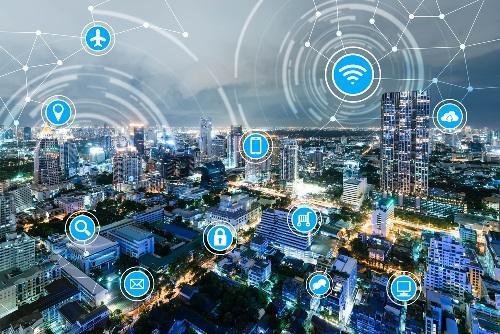In a world where technology is increasingly ubiquitous, it seems every city is a smart city. The mass deployment of broadband infrastructure, mobile phones, and wireless connectivity is just the beginning. The Internet of Things—a web of connected devices and sensors in the physical world can interact with analytics systems, using machine learning to turn realms of real-time data into new insights and instant responses. However, building a smart city means more than hardware deployment. What makes a city truly smart is how it uses all that technology to deliver better outcomes for its citizens. While debates in the past were often focused on the technologies themselves, the discussion must now turn to the needs of residents, the concrete problems to be solved, and how smart cities can be built to address those root problems.
The authors in this compilation explore the application of cyberphysical technology around three main themes. First is bringing intelligence into the citizen’s daily life whether in water conservation and use, transportation, home sharing or security. Cities are increasingly realizing that the benefits of smart cities go far beyond efficiency gains: technology is helping cities become more livable and sustainable. Moscow’s transportation program, for example, aims to save Muscovites a week of commuting time a year through an integrated, technology-enabled initiative to change the average citizen’s mobility experience. Second, technology is changing how governments think about serving their citizens. Governments are reimagining their systems and processes with an eye toward ensuring not just an improved living experience but also equitable access to infrastructure and programs, becoming more responsive and citizen-centric. From Pune, India, to Toronto, Canada, smart city technology is speeding up the metabolic rate of government. Third, the landscapes through which we move are transforming under our feet. Initiatives from waterfront revitalization to greenfield city development are creating new venues for the deployment of technologies that can turn deserts into industrial valleys and rust belts into brain belts. Chinese cities are transforming by adopting technologies to green their riverfronts and prepare for a new industrial age, even as they bring back traditional concepts of human-based placemaking. Implementing digital solutions on a citywide scale requires vision and persistence—which is why this issue of Voices brings together multiple case studies from around the globe. Mayors, experts, technology leaders, and residents themselves all have a role to play. We hope these perspectives help guide decision makers in shaping the smart cities of the future.
Please, read the full report at: http://www.globalinfrastructureinitiative.com/sites/default/files/voices/edition/pdf/Voices-December-2017-WEB.pdf
